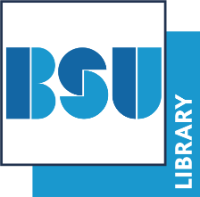Coombs, S and Rodd, J (2002) 'Using the Internet to deliver Higher Education: A cautionary tale about achieving good practice.' Computers in the Schools, 17 (3/4). pp. 67-90.
|
Text (This is an Author's Accepted Manuscript of an article published in Computers in the Schools [copyright Taylor & Francis])
CompSchools_articleOct00.pdf Download (347kB) | Preview |
Abstract
This article reviews the development and delivery of a Higher Education course module as part of a large European University's Integrated Masters Program operating through a regional network of Rural Area Training and Information Opportunities (RATIO) telematic centres. The aim of the project was to provide remote learners living in the southwest of England with computer-supported solutions to access higher education as part of a technology-assisted distance education program. The module represented a shift from traditional educational delivery systems by using instructional courseware via an Internet Web site. Personal communications with module participants were conducted with the use of e-mail and videoconferencing information technology (IT) resources. Out of the original sixteen participants who enrolled in this Masters course module, four actually completed the learning sessions and two submitted final assignments. This article considers the key lessons learned from this attrition rate and shares the mainly positive experiences of the remote tutor and the students engaged in this initiative. The implications regarding the use of the Internet for delivering higher education course modules through online distance learning are discussed in the light of cautions learned from this research project and important practical recommendations for future practice are made.
| Item Type: | Article |
|---|---|
| Note: | This chapter is set within the field of enquiry of e-learning; specifically the development of web-based materials for Higher Education distance learning modules. Its theoretical perspective is that of synchronous and asynchronous pedagogic communication. Its original contribution to theory is in the introduction and problematising of the conceptual terms 'webministration', 'cyber protocols' and 'cybervoid', and in the identification of a new pedagogical framework for both synchronous and asynchronous pedagogic communications protocols for when designing higher educational instructional materials on the web. It is significant in that it emerged from an EU funded research project called RATIO (rural area training initiatives opportunity) implemented across the southwest of England as part of an pioneering e-learning Higher Education instructional design project. Its rigour lies in its application of an action research methodology, and the article on which it is based was subjected to an international double refereeing process. |
| Subjects: | L Education > L Education (General) |
| Divisions: | School of Education |
| Date Deposited: | 18 Nov 2012 04:45 |
| Last Modified: | 15 Aug 2021 09:31 |
| ISSN: | 1528-7033 |
| URI / Page ID: | https://researchspace.bathspa.ac.uk/id/eprint/89 |
 |
Request a change to this item or report an issue |
 |
Update item (repository staff only) |

 Tools
Tools Tools
Tools